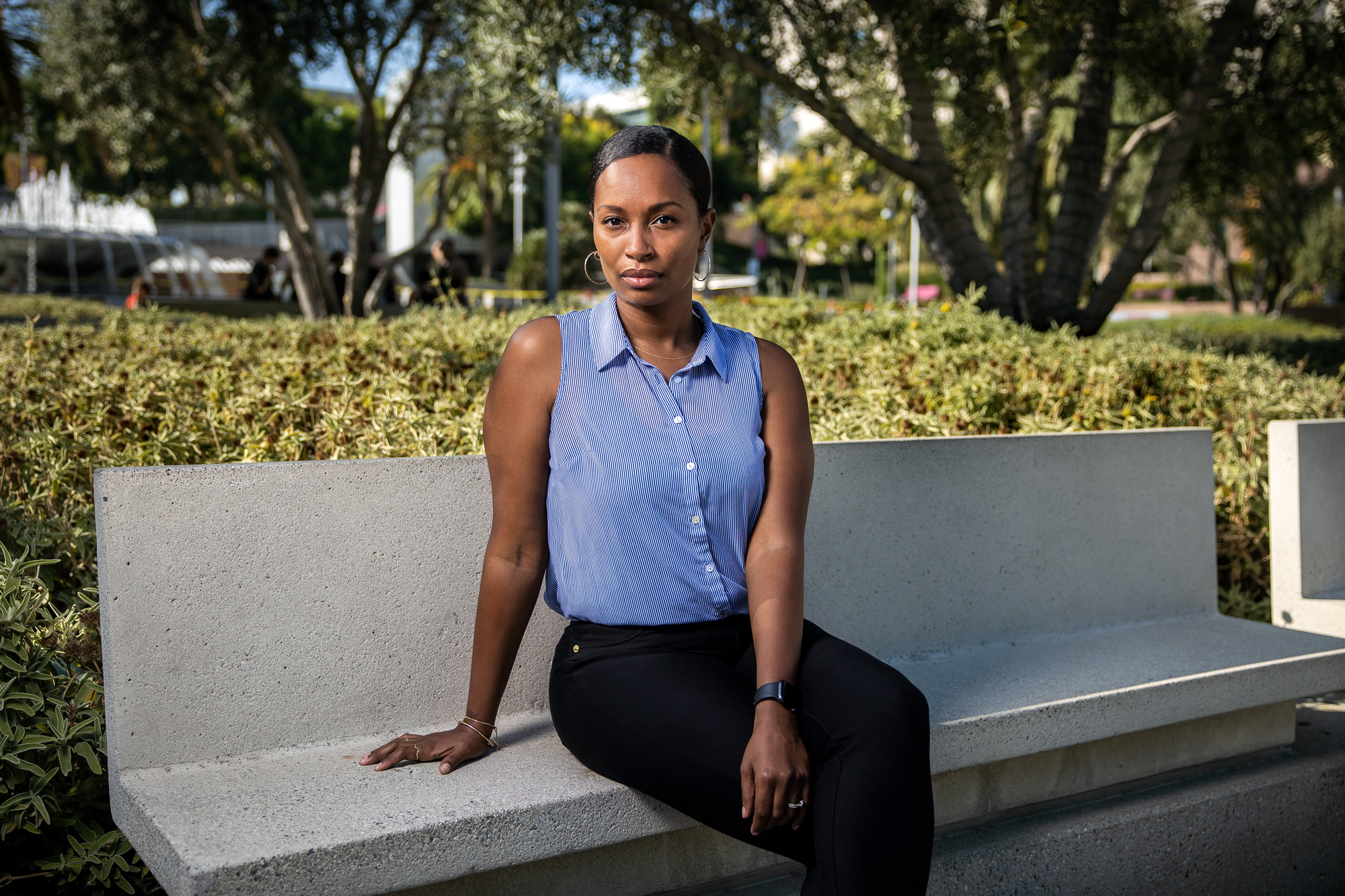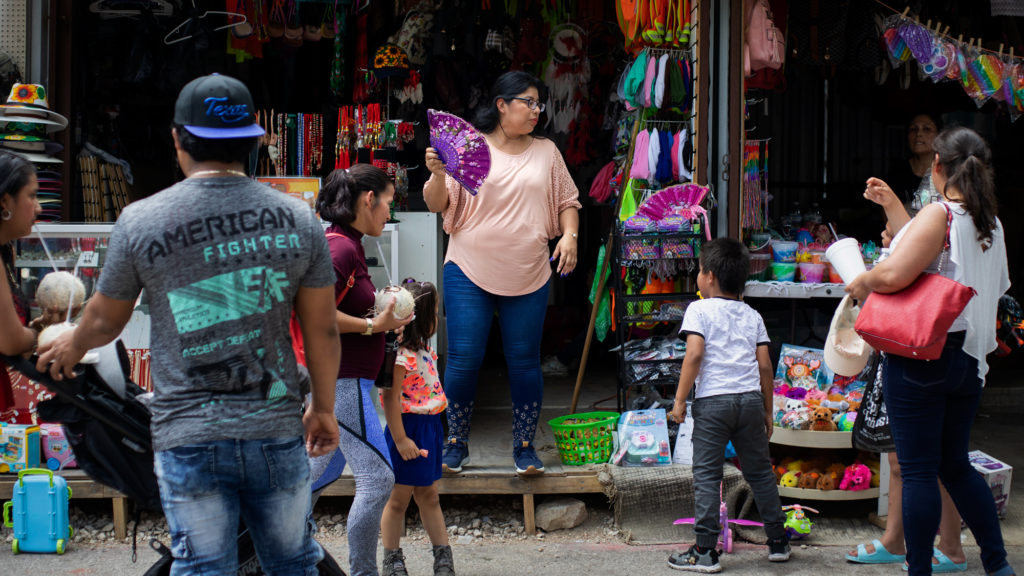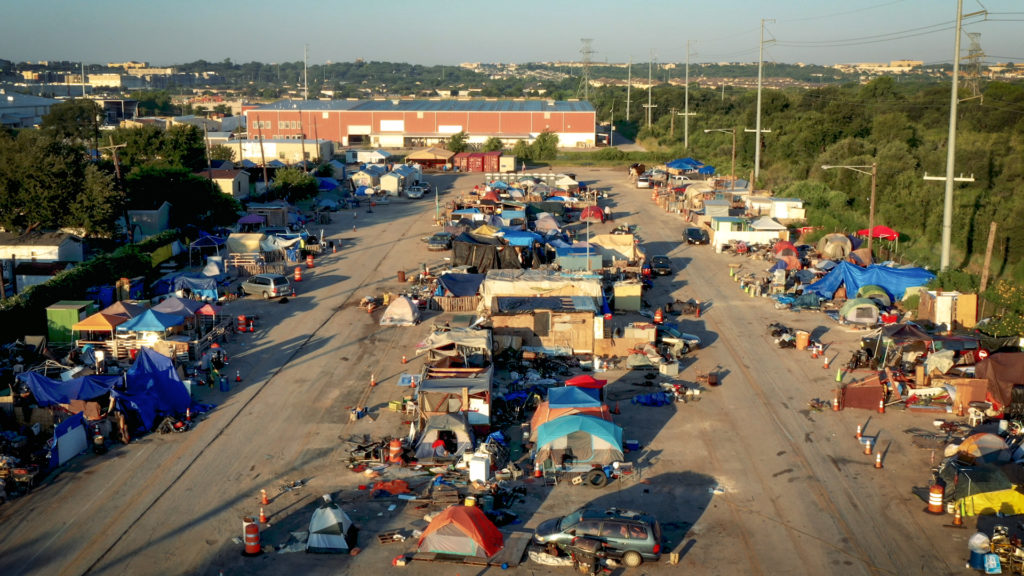Charity Chandler-Cole sits on the Los Angeles County Commission for Children and Families, where she co-chairs the Commission’s Committee on Racial Justice with the goal of identifying racist, systemic, and institutional biases within the county’s child welfare system. Chandler-Cole is also a co-founder of Village Home LA, which seeks to reimagine the child welfare system in Los Angeles.
[The following conversation has been edited for brevity and clarity].
Resolve Magazine [RM]: You’re a vocal proponent of dramatically rethinking foster care in the United States. Where does your passion come from?
Charity Chandler-Cole [CCC]: Basically, I had a really, really tragic and terrible experience in the foster care system.
I remember when I got out feeling so bothered about how the experience had utterly failed to set me up for success for the rest of my life. I came out feeling bothered that, by the mere fact of being a foster youth, I was automatically seen as limited in what I was capable of doing and what I would ever be able to achieve.
Having had not just my own personal terrible experience in the foster care system but being around so many other little girls in the system that had equally or worse situations and sets of circumstances than I had, and just seeing and feeling unworthy while being there and not wanted, and as if I was something that can just be easily discarded, I didn’t feel cared for, or appreciated, or loved and I just felt as if I was someone’s burden that they did not want to deal with.
When I left the system, I got pregnant right away. And the day I decided to keep my child, I told myself that he would never experience any of the things I had experienced. That’s when I decided that I needed to redefine what it means to be a foster youth.
Of course, I had no idea what that could look like because I didn’t see any people who looked like me and had gone through what I went through who had come out successful.
There wasn’t a blueprint, so I literally made up a fantasy in my head of what I thought it should look like and, since then, that’s what I’ve aspired to.
RM: Your outlook on the foster care system, and the child welfare system generally, is that it does more harm than good. Can you explain?
CCC: I was sexually exploited when I was in foster care and I saw dozens of other girls being sexually exploited while in the system. That didn’t happen when I was at home. That would not have happened to me at home.
But even if you forget for a second all of the harm that happens in the system — all the exploitation, the verbal and physical abuse — all you really need to look at are our outcomes. Just ask yourself, “What happens when we leave the system?”
Less than 4 percent of us graduate college. Mind you, more than 84 percent of foster youth want to go to college. If you look at our homeless problem, 40 to 50 percent of foster youth in California experience homelessness within 18 months of aging out of the system. If you look at California’s prisons, 28 percent of our prison population were in foster care at one time in their lives.
If we have a situation where we know for a fact that foster youth are going to end up homeless, incarcerated, poor, on welfare, not going to college, not graduating high school, what does that say? Are we really good stewards of our children? Are we really trying to protect them? Does their welfare really matter? It doesn’t.
When you compare foster youth with Black and Brown children who are not in foster care, you see higher rates of those children having more successful outcomes regardless of their socio-economic status.
As foster youth, we can literally live our whole lives failing, and no one will question it. The second you say you are a foster youth, no one’s going to ask why you didn’t go to college or why you’re strung out on drugs or why you’re homeless. But when we succeed, people are shocked.
Foster care is not something associated with positivity. It’s not something associated with success. It’s not something associated with healing and restoration.
It’s associated with being discarded, being warehoused, with being not wanted. That’s how you feel, and it’s evident in our outcomes.
RM: Beyond the immediate impacts on youth, you see the child welfare system as interwoven with the criminal justice system in perpetuating cycles of trauma on Black communities. Can you describe the interconnectedness of these systems?
CCC: I usually look at this question from a perspective of collateral consequences.
We live in a society that intentionally incarcerates Black and Brown people for very petty crimes, or simply because of the color of their skin.
Across the country, we see Black and Brown people going to jail at disproportionately high rates and, when that happens, it’s not just the individuals who lose their freedom that are impacted, there’s also a collateral impact on their families and children.
When we see a Black father and husband, for example, get pulled over for “driving-while-Black,” and maybe he’s put in jail for forgetting or refusing to comply — on top of throwing the man in jail, you’ve now made a single mother and left her to deal with raising their children alone.
This mother may or may not have a job, but either way, she’s certainly now suffering the emotional burden and trauma of having her spouse, her best friend, her partner being incarcerated, and of having to raise her child by herself. I’ve seen mothers who have degrees and who have come from some of the best circumstances self-sabotage and collapse under the emotional distress as a result of something like this and turn to drugs or alcohol as a way to cope.
In many instances, these women are impoverished, and they can’t afford to provide for their child on their own, but even if they’re lucky enough to have a job, paying the bills prevents them from spending as much time with their children.
This creates a situation where you might have a neighbor who looks at those children and says, “This is a turnkey child. This is a child who isn’t being properly taken care of.”
As Black mothers, the prevailing idea is that we do not know how to take care of our children correctly. We know people often call Social Services on parents simply because they’re poor or because their Blackness is perceived as a threat. If our children are lacking in any way, it’s seen as a reflection of us not loving our children.
The problem is that we don’t blame society for creating these circumstances. We don’t blame the systems that are in place that prevent us from having equal access to jobs and housing and education. We say that the mother doesn’t love her child.
The mother is considered a criminal and she’s punished by having her child taken away. And then the child is punished and put into another system — not unlike the criminal justice system — that also devalues Black and Brown people.
So, instead of taking the billions of dollars that’s spent in child welfare to help the communities and the parents fill those gaps with having to work so many hours or their inability to maybe feed their children or dress them the ways certain folks feel they need to be dressed, we’ll take those billions of dollars and put them into an institution that doesn’t help the child either. That actually perpetuates the racism and the criminality that the child’s father went through.
RM: Beyond the larger systemic forces at work, how have you seen racialized perspectives show up in the foster care system in your time as a foster youth and in your work on the LA Commission for Children and Families?
CCC: Many foster youth are taken from their parents under the guise of protecting the children, but tearing them apart from their parents causes a whole slew of emotional distress and trauma that very few children ever recover from.
Then, when they leave the system, they’re not leaving as successful agents of society. They’re not going and becoming leaders and doctors and teachers. The statistics show most systems-impacted youth live a life of crime, a life of abuse, a life of poverty.
That’s not an accident. While they’re in that system, they’re constantly being told that’s all they’ll amount to. “Your mother doesn’t love you,” they’re told. “You’re here because your parents couldn’t take care of you.”
To me, the biggest issue is in how we refuse to see children and families as children and families. Instead, there’s an automatic assumption that if a Black or Brown person is referred to Child Welfare, they’re guilty.
I went in for stealing underwear. I started as a probation youth, went to juvie for stealing a pack of underwear, and then went to the foster care system after that. Through that process, no one, not one time asked me, “why are you stealing underwear? What is happening in your family?” Mind you, these weren’t Victoria’s Secret. These were Fruit of the Loom and I was stealing them for my little sister because she needed underwear.
No one ever asked, “What’s going on in your family? What’s going on with your mother? Let’s have a conversation with her to see what your needs are.”
What happened was that they saw a Black girl who had a pack of three-dollar Fruit of the Loom underwear in her pocket, and they not only reprimanded me for that, they handcuffed me, put me in the back of a police car, and took me away.
Ask yourself, “Would this have happened if I were White? Would I have been treated the same way if I were White?”
When I went into the system, I was literally told by my caseworkers, my social workers, that I was nothing. I was called a “monkey bitch” once. I was told that I would “only be good for jobs for which I had to lay on my back to receive them.”
If we’re looking for the overt racism that exists in our system, you can find it in how we’re looked at, how we’re treated, and how we’re handled as Black and Brown people. We are not looked at or treated as humans. We’re just the case. We’re not handled with care. We’re not loved.
RM: Beyond your work on the LA County Commission for Children and Families, one of the ways you’ve sought to address these issues is to start over from scratch and reimagine how our society cares for foster youth. Can you talk about your work creating Village Home LA?
CCC: So when I was 16 and in the system, I had this vision of creating a group home one day—”group home” was the term that I used at the time because I was in a group home. I had this vision of creating a safe haven for youth like me that could have somewhere to live, where they were loved, where they were protected, where they were educated, where they felt wanted, and that they had a community of people that were like them to just sharpen and embrace each other.
Recently, I went to India with the Zuckerberg Institute. While I was there, I learned about the people from Tibet who faced death crossing the Himalayas to escape the Chinese regime on their way to Dharamsala, India. It’s a mass exodus that began in the 1950s, but it continues to this day.
In the process of fleeing Tibet, a lot of the children are displaced from their parents, but their parents don’t need to fear for their children’s safety.
When they arrive in Dharamsala, children without parents are taken into a community of Tibetans in exile, a village where they’re cared for. This community looks at the children we might call “foster youth,” and they make sure they have the best education, the best access to health care.
None of those kids end up in jail. None of those kids have poor outcomes. And they all grow up to be leaders in the community, and in turn, they become capable of taking in the next group of kids who come across the Himalayas.
Being there and seeing that, I told myself, “Charity, you’re going to create your own village. It’s gonna be hard as hell, but you’re gonna do it.”
When I got back to the United States, a friend connected me with another woman with a similar vision named Rosanne Ziering and she told me about another community just like it in Israel called Yemin Orde Youth Village.
Yemin Orde takes in hundreds of children who were displaced, who didn’t have their parents, who were orphaned and who had experienced any number of extreme forms of trauma and cares for them on a village-like campus where they live and have access to the highest caliber education, mental and physical health treatment, and social and extracurricular development programs.
What Yemin Orde does with their village model was so powerful that regardless of what the children had gone through, they were able to build them up and uplift them.
The truth is that between the ages of 12 and 19, children are the most resilient. They can go through all sorts of trauma and bounce back if they are loved and nurtured, and if they’re provided with the right set of circumstances and resources.
After talking and sharing, Rosanne and I decided to partner together to start our own village and to make that our goal.
RM: Where are you in that process, and how can people learn more and get involved?
CCC: It’s so exciting. It gives me chills to talk about it.
We’ve formed a working group of about 20 phenomenal people in education, law, social work, real estate, etc. We have someone from every field we need to build our village, and we’re currently workshopping the model to make sure it’s perfect, so it can be replicated all over the country.
Right now, we’re looking at properties, and we’ve met with a few organizations and folks that have land because we want to build out something completely new. We want our village to be in nature, but close enough to the city that we can partner with YouTube and Google and leverage those folks to help us in training our kids. They don’t know it yet, but if YouTube and Google read this, we’re coming for you.
We’re also looking for funding right now. The goal is to base things in large part on private dollars, but also to figure out how to utilize public funding. What we won’t allow, though, is for the public or government funding to come in and say, “You have to do it this way or that way.”
By any means necessary we’re going to build this, and we’re going to make sure that we stop this generational cycle of poverty, of neglect, of oppression, of disenfranchisement, of punishment that we have for children and families within our Black and Brown communities—Black, Brown and indigenous communities.
We plan on breaking ground within the next year, if not sooner.



